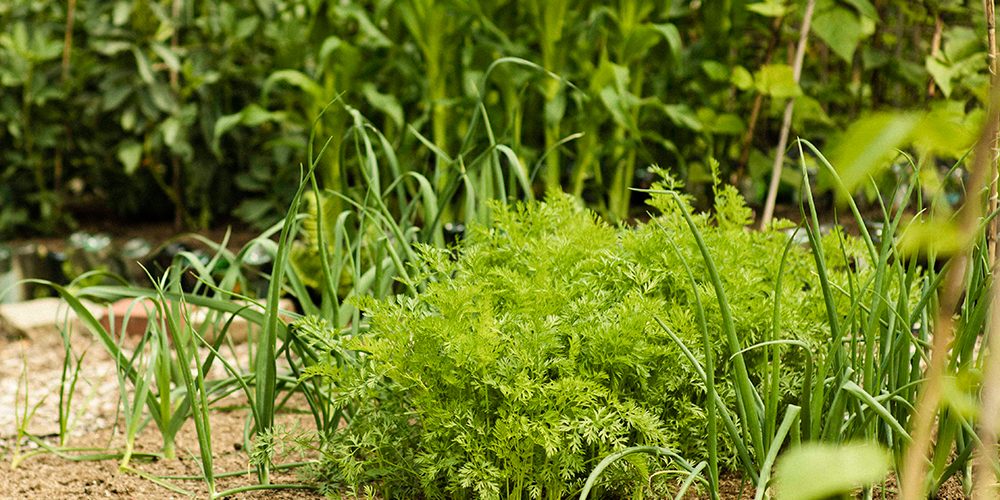It’s a classic… reaching the vital moment of planting out your plugs and realising that you don’t have quite enough space. Here are a few tips and tricks that will help!
- Plant lettuces and salad leaves in between other rows.
They grow quickly and can easily plugged in between slow growers like sweetcorn, parsnips and celeriac. - Plant veggies that you can eat as babies a little closer together.
Leeks, carrots and beetroots can all be squeezed in tightly within their rows. Plant them half the recommended distance apart, then harvest half of the row a little earlier on in the season (harvest every other one in the row leaving the remainder with the recommended growing space) and eat them as babies. They’re super tasty then too! - Plant squashes and sweetcorn together.
We usually advise leaving around 1m space between squash, pumpkin and courgette plants. But when they are seedlings they are really very small and it takes a little while for them to get going. If you plant your sweetcorn in between them, the sweetcorn will grow tall enough to reach the sunlight by the time the squash plants grow big enough to provide ground cover. - Plant cut & come again leaves closer together.
If you don’t intend to harvest an entire head of lettuce/spinach/chard etc, but will be harvesting them as cut & come again leaves throughout the summer, then you can pack them in a little more closely together, as close as 10-15cm apart. - Plant carrots between rows of leeks or onions.
There’s nothing to stop you popping carrots in the ground between rows of onions or leeks, and this will help in deterring carrot fly too. - Grow squashes and courgettes vertically.
A simple trellis placed at the back of a raised bed can allow you to train your courgettes and squashes to grow vertically and is a great space saver. - You don’t have to have a dedicated bed for herbs.
It’s always lovely to have a dedicated herb garden, but you can save a lot of space by simply popping them in between other veg plants. Basil is great grown between tomatoes. Coriander benefits from the shade of other, taller plants. Chives work well planted alongside carrots to deter carrot fly. - Don’t feel restricted to neatly spaced rows.
They look nice and they’re practical, but you don’t have to conform. If you’ve had a few casualties from slugs or pigeons in part of a raised bed, then just fill the gaps with something else. No problem. - Give plants extra nutrients.
As long as your plants can access sunlight, water and nutrients then they should grow well. You can plant leafy vegetables and not-so-leafy vegetables (e.g. leeks/onions) in amongst each other and they’ll still be able to access plenty of sunlight. Just be sure you water them well and give each plant a handful of wormcast fertiliser when you pop them in the ground to keep them well nourished. - Broccoli, cabbages & cauliflower are slow to bulk out.
That means that you can plant faster growers like lettuce and peas in between them. You’ll have harvested your quick growers before the slow-coaches need the extra space.

